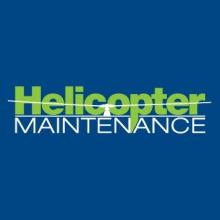Change
Like many of you, I have been through several changes in my career. For me, each change brought both excitement and anxiety. I was eager to tackle new jobs and opportunities, but also anxious about how I would handle the change. I’ve learned from every opportunity and continue to embrace change.
I sometimes think about how aircraft maintenance has changed in the 35+ years since I started turning wrenches. Back in the late 80’s, I had to walk uphill in the snow to and from work each day! OK — all kidding aside, I have seen plenty of change in aircraft maintenance. We used to spend hours updating our microfiche library on a regular basis. We would regularly review logbooks to ensure required inspections and maintenance events were accomplished in a timely manual. We had bookshelves upon bookshelves of maintenance manuals, wiring diagrams and other technical publications.
Now we have electronic records keeping, databases and maintenance software that alerts us about upcoming maintenance requirements.
There have also been many changes with the tools and equipment we use. We have seen borescopes and videoscopes get thinner while at the same time offering crisper and clearer images, picture and video capture and even 3-D measurement. RFID is used in many different applications. There are now even “smart” toolboxes that can track tool usage and identify missing tools.
Then there are smartphones. My “mobile” phone back in the day was the size of a lunchbox. It was a bag with a battery and a handset. It made and received calls — period. Now we have smartphones that have opened the world of possibilities. We can video chat with a tech rep if we have a question about an aircraft discrepancy. We can use our phones to take photos and videos and forward them on for reference. We can search the internet for information on just about anything we need to do. The built-in GPS on our phones can guide us to a remote location. We even have AI helping us. Gone are the days when a couple of coworkers would argue about who was right about a particular topic of conversation. A quick shout out to Google, Siri or Alexa will find the answer for us.
While walking around HAI HELI-EXPO in Dallas last month, there were many examples of the continued change taking place in our industry. I attended my first HELI-EXPO in 2001. I would have never imagined back then that I would be walking around the same trade show 21 years later looking at UAV manufacturers and service providers. I would have thought you were crazy if you told me back then we would fly a helicopter on Mars within 20 years! I would have thought you were insane if you told me back then that 21 years later, when a helicopter returned from a flight, you would know that the rotor track and balance (RTB) was out of limits, and the helicopter would tell you what solution was needed to correct the discrepancy right away.
It turns out that isn’t insanity — it’s reality. I stopped by the GPMS (gpms-vt.com) at the show. I was given a demo of its Foresight MX product. Simply put, it is HUMS on steroids. Foresight is a cloud-based system that offers predictive HUMS, flight data monitoring and rotor track and balance. With Foresight, data from sensors on the helicopter are constantly monitored while in flight. Once the helicopter lands, that data is uploaded to the cloud. Users can then view the information on a PC, tablet or, yes, their smartphone. In the case of a RTB scenario discussed earlier, the software not only alerts of the exceedance, but offers a recommended solution that can significantly reduce the time it takes to fix the problem. GPMS says that this takes work associated with RTB from days to hours.
I can’t even begin to imagine what kind of change our industry will see in the next 20 years.
Maybe I’ll see you at HELI-EXPO 2042 to reflect on what the past 20 years brought us?
Thanks for reading!
Joe

